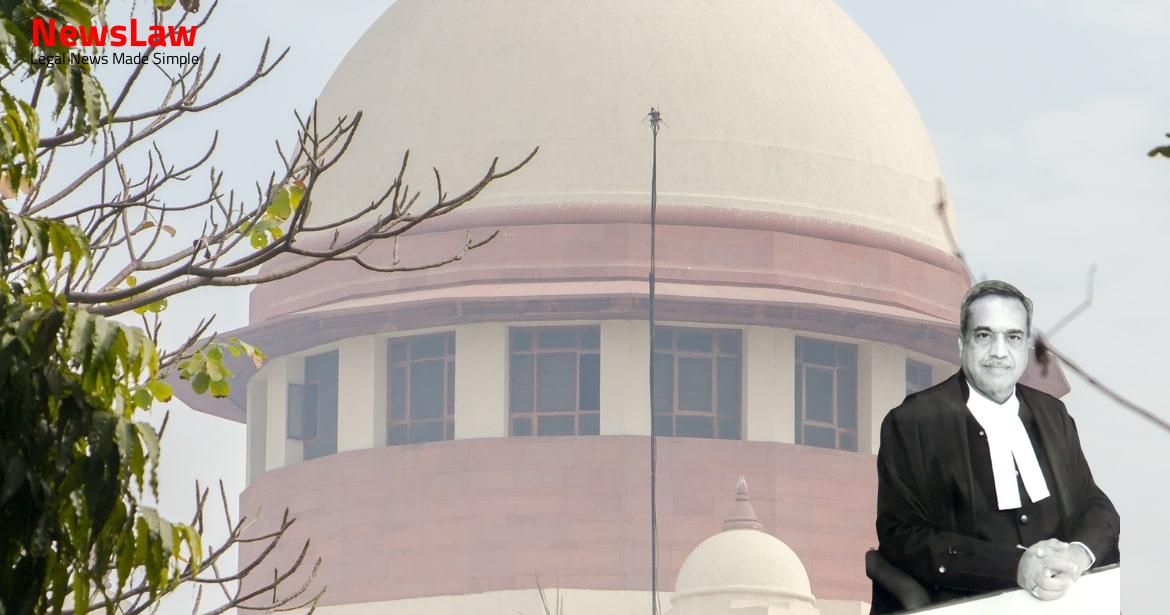Unravel the complexities of regularising contract employees as per a recent High Court judgment. The court’s legal analysis delves into precedents set by various landmark cases, shedding light on the nuances of the law in such matters. Explore the legal intricacies and implications of this crucial decision in the realm of employment law.
Facts
- The appeals arise from a final judgment and order dated 22.11.2016 by the High Court of Delhi.
- The University Grants Commission (UGC) imposed a ban on filling non-teaching posts in all institutes, universities, and affiliated colleges.
- Regular vacant posts were available at the time of appointment of the contract employees.
- The original appointments of the contract employees could be considered irregular but not illegal.
- An independent appeal was filed by the Union, leading to an interim order suspending special tests but allowing contract employees to continue working provisionally.
- The contract employees were granted liberty to participate in future selection processes.
- Even after a selection process in 2013, there were still regular vacancies in the University.
- The University was directed to file an affidavit to indicate the status of the vacancies.
- The University granted age exemption to contract labor for participating in selections, similar to the Scheme in the Umadevi case.
- The Delhi High Court allowed an appeal by the Union and directed the University to hold appropriate tests for selection.
- Contract employees who applied in the last recruitment drive had the necessary qualifications as per the 2008 recruitment rules.
- The contract workers were given a fair opportunity to be tested on a realistic and fair scale, different from new applicants.
Also Read: Electoral Malpractices in Mayor Election
Arguments
- The Regularisation Rules did not benefit anyone, rendering the legislative exercise meaningless.
- The vacancies from the process initiated in 2013 remained unfilled.
- The concept of a one-time measure in M.L. Kesari was cited for reference.
- The State of Jharkhand’s creation date and the issue of completing 10 years of service were raised in the High Court.
- The writ petition was erroneously treated as a request for regularisation.
- Resolutions issued by the State in 2009 allowed for regularisation of employees with less than 10 years of service.
- Mr. Santosh Kumar, learned Advocate argued that the directions issued by the Division Bench of the High Court were not in line with the law established in Umadevi and subsequent decisions including Official Liquidator vs Dayanand and Others.
- The upcoming selection process would include a total test marks of 300 with a 10 marks grant amounting to a 3.33% advantage, as per the benefits outlined in paragraphs 6 and 7 of the affidavit dated 09.03.2021.
- References were made to various judgments like State of Karnataka and others vs M.L. Kesari and others, State of Gujarat and others vs PWD Employees Union and others, Nihal Singh and others vs State of Punjab and others, Sheo Narain Nagar and others vs. State of Uttar Pradesh and others, and Narendra Kumar Tiwari and others vs. State of Jharkhand and others.
- The Judgment in U.P. SEB v. Pooran Chandra Pandey was considered inconsistent with the law laid down in Umadevi, emphasizing that a two-Judge Bench’s decision cannot be applied where regularisation is sought in pursuance of Article 14 of the Constitution.
- The decision of a two-Judge Bench in Pooran Chandra Pandey was found to be contradictory to the law established in Umadevi.
- Though arguments were presented suggesting the extension of regularization benefits post the Umadevi decision, they were ultimately rejected based on specific circumstances related to the job advertisements.
- The cases cited by Mr. Colin Gonsalves, learned Senior Advocate were all from Benches of two Judges of the Court.
- In conclusion, the arguments presented by both parties were analyzed and specific references were made to establish the consistency with or deviation from the precedents set by various judgments.
Also Read: Balancing Power and Transparency: Electoral Bonds Struck Down, Disclosure Mandated
Analysis
- The directive from the Court in paragraphs 6 and 7 of the affidavit is modified to extend age relaxation to all contract employees without qualification.
- A one-time exercise should be conducted by each department to identify casual, daily-wage, or ad hoc employees working for over ten years for potential regularisation.
- The purpose of the Umadevi decision was two-fold: prevention of future illegal appointments and granting benefits to those irregularly appointed in the past.
- The decision in Umadevi is binding on all courts until overturned by a larger Bench, emphasizing its importance.
- Arguments claiming the State’s obligation to make permanent appointments as per Umadevi were clarified, highlighting the allowance for contractual/temporary appointments as per exigency.
- All contract employees, regardless of age, should be given a fair chance to participate in the selection process and receive advantages as per the Court’s order.
- Contracts employees had put in only 3-4 years of service by the time of the Umadevi judgment.
- The ratio of the Umadevi judgment has been followed by different two-Judge Benches in declining to entertain claims of regularisation from ad hoc/temporary/daily-wage/casual employees.
- The Umadevi judgment stated that irregular appointments of duly qualified persons in duly sanctioned vacant posts for ten years or more may warrant consideration for regularisation based on merit.
- The judgment set aside directions for absorption of all company-paid staff as it was deemed violative of equality enshrined in Articles 14 and 16 of the Constitution.
- The employment situation during liquidation proceedings discouraged more qualified applicants from applying for company-paid staff positions.
- The Public Notice must invite applications from the candidates, specifying the advantage to be given to contract employees as per the Court’s order.
- This provision aims to ensure that other candidates are aware of the advantage conferred upon contract employees.
Also Read: Recall of Resolution Plan Approval: Legal Analysis
Decision
- The appeal is disposed with a direction to the University of Delhi to conduct an appropriate test for selection in accordance with the notification dated 6 November, 2013.
- Contract employees covered under the 6 November, 2013 notification with essential qualifications obtained earlier are eligible for the test due to their satisfactory service and experience gained.
- Financial Advisers to ensure a time-bound review and availability of details of vacant posts.
- Ban on filling vacant posts without UGC approval.
- Contract employees can apply for selection within the next four weeks, and the test will be conducted three months after receiving applications.
- Court empowered to mold relief for complete justice.
- Impugned order of the Single Judge modified with above directions.
Case Title: UNIVERSITY OF DELHI Vs. DELHI UNIVERSITY CONTRACT EMPLOYEES UNION (2021 INSC 209)
Case Number: C.A. No.-001007-001007 / 2021



